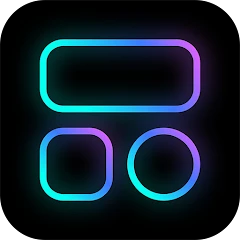How to Get Started with WidgetKit-OS18 Themes & Icons?
- 1. **Understand WidgetKit Basics**: Familiarize yourself with WidgetKit and how it handles widgets, timelines, and configurations.
- 2. **Develop with Xcode**: Open Xcode and create a new Widget extension for your app. Ensure you’re targeting iOS 17 or later to access the latest features.
- 3. **Use SwiftUI**: Design your widgets using SwiftUI, allowing you to customize layouts and behaviors easily.
- 4. **Implement Themes**:
- - Use the new customization options available in iOS 17.
- - Define a model for your widget’s theme, including colors, fonts, and other visual elements.
- - Create theme variants for different widget states (e.g., focused, unfocused).
- 5. **Personalization with Icons**:
- - Leverage the new icon personalization features.
- - Provide various icon sets for users to choose from, allowing them to match their preferences or themes.
- - Utilize `WidgetFamily` to define which icons will display in different sizes.
- 6. **Responsive Layouts**: Ensure your widget layouts adapt well to different screen sizes and orientations.
- 7. **Preview Widgets**: Use Xcode's widget preview tools to see how your widgets will look in different settings and themes.
- 8. **Test on Device**: Deploy your widget to physical devices to check for performance and usability.
- 9. **Submit to App Store**: Once satisfied with the personalization options, submit your app and widgets for review on the App Store.
- 10. **Gather Feedback**: After release, gather user feedback to continuously improve theme and icon personalization in future updates.
10 Pro Tips for WidgetKit-OS18 Themes & Icons Users
- 1. **Understand WidgetKit Customization**: Familiarize yourself with the various customization options within WidgetKit to fully utilize themes and icons.
- 2. **Explore Dynamic Colors**: Use dynamic colors that adapt to light and dark modes. This ensures your widgets look great regardless of the user's display settings.
- 3. **Consistent Iconography**: Choose icons that have a cohesive design language and align with your app's branding for a polished look.
- 4. **Utilize Spacing and Layout**: Pay attention to the spacing and layout of your widgets. Ensure that elements are balanced and that there’s enough white space to enhance readability.
- 5. **Test Across Devices**: Always test your widgets on different device sizes to ensure they’re visually appealing and functional regardless of the screen.
- 6. **Incorporate User Feedback**: Gather and implement user feedback regarding widget themes and icons to continually refine the user experience.
- 7. **Seasonal Updates**: Consider updating themes and icons for seasonal events or holidays to keep your content fresh and engaging for users.
- 8. **Animations and Interactivity**: If applicable, add subtle animations or interactive elements to your widgets to create a more engaging experience.
- 9. **Accessibility Considerations**: Ensure that your color choices and iconography are accessible, utilizing high contrast and recognizable symbols for users with visual impairments.
- 10. **Stay Updated with Guidelines**: Regularly check Apple's Human Interface Guidelines and WidgetKit updates to stay informed about best practices and new features.
The Best Hidden Features in WidgetKit-OS18 Themes & Icons
- **Dynamic Color Schemes**: Customize app themes with light and dark modes that adapt based on user preferences or system settings.
- **Custom Icons**: Use custom app icons to create a unique look for your home screen, allowing for better expression of personal style.
- **Widget Stacking**: Combine multiple widgets in a stack, allowing users to swipe through different widgets without taking up extra space on the home screen.
- **Interactive Widgets**: Incorporate buttons or sliders in widgets for direct interaction, enabling users to control app features without opening the app.
- **Personalized Content**: Widgets can show tailored information based on user data, such as reminders, calendars, or weather tailored to the user's location.
- **Minimalist Design Options**: Utilize simple, clean designs with varying levels of transparency for a modern aesthetic that doesn’t overwhelm.
- **Quick View Widgets**: Enable widgets that provide at-a-glance information, such as workout stats or news headlines, making it easy to stay informed.
- **Themes and Backgrounds**: Choose from a range of pre-set themes or create customized backgrounds that complement app icons and other elements on the home screen.
- **Animated Widgets**: Use subtle animations to enhance the visual appeal of widgets, making them more engaging and interactive.
- **Adaptive Layouts**: Widgets adjust their layout based on screen size or orientation, ensuring an optimal display on different devices.
WidgetKit-OS18 Themes & Icons Faqs
What types of themes can I find in WidgetKit-OS18?
WidgetKit-OS18 offers a variety of themes, including minimalist, dark mode, and vibrant colors. You can explore different categories and customize your interface according to your personal style.
How can I customize my widgets using this app?
To customize your widgets, open WidgetKit-OS18, select the widget you want to modify, and choose a theme or icon pack. Adjust the settings like size and layout to fit your screen preferences.
Can I create my own themes in WidgetKit-OS18?
Yes, creating your own themes is possible! You can mix and match colors, textures, and icons within the app. Go to the theme creation section, select your desired options, and save your custom theme.
How do I change the icon pack in WidgetKit-OS18?
Changing the icon pack involves a few steps: 1. Open the app and go to the settings menu. 2. Select 'Icon Packs' from the options. 3. Browse available packs and select one. 4. Apply it to confirm changes.
What are the available widget sizes in this app?
WidgetKit-OS18 supports various widget sizes, typically including small, medium, and large options. You can choose the size that best fits your home screen layout and display preferences.


1.Rate
2.Comment
3.Name
4.Email